#trying to cover up the japanese text is not slick 90% of the time
Explore tagged Tumblr posts
Text
Giroro & Natsumi's 20th Anniversary Chapter - English Translated
Volume 30 of the manga is mostly a collection of chapters based on each keronian/pekoponian duo in honor of the 20th anniversary....... this is Natsumi and Giroro's !!
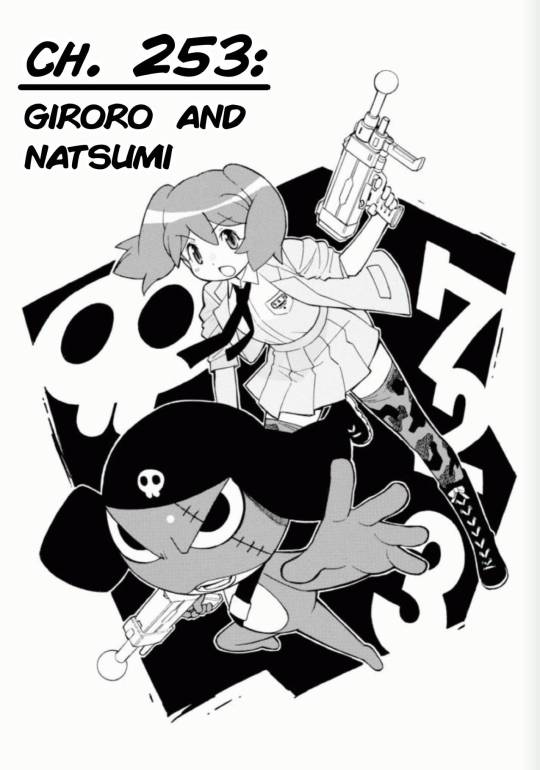





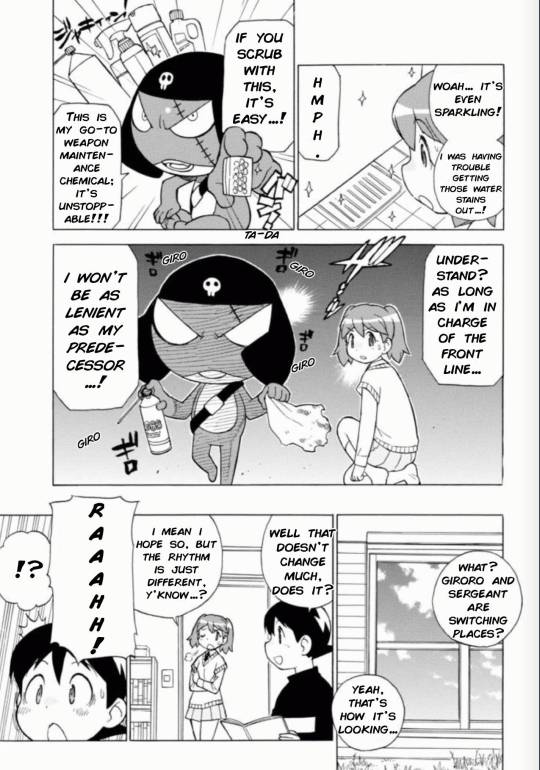





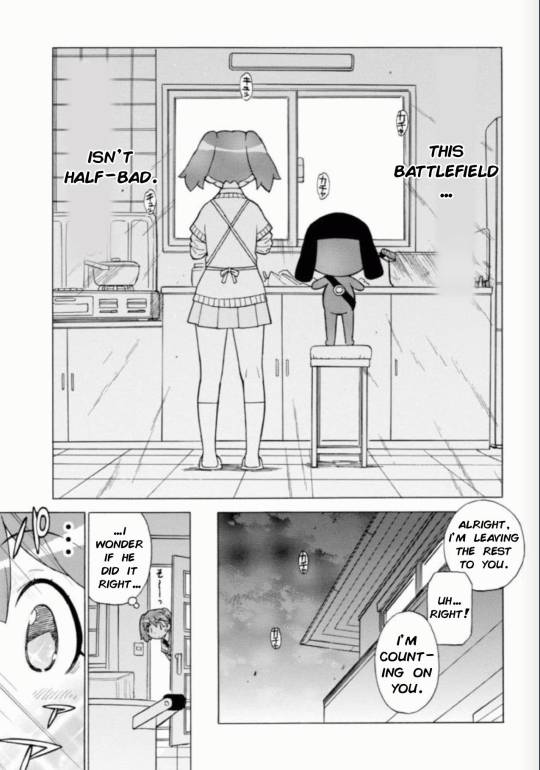

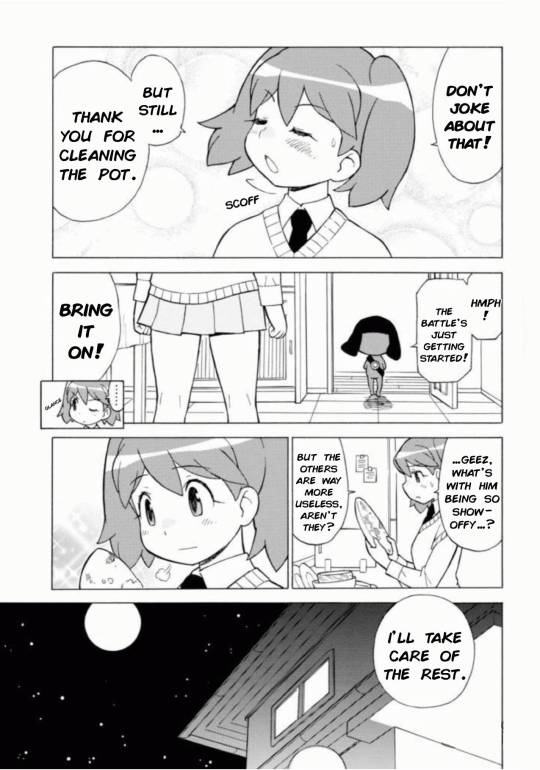
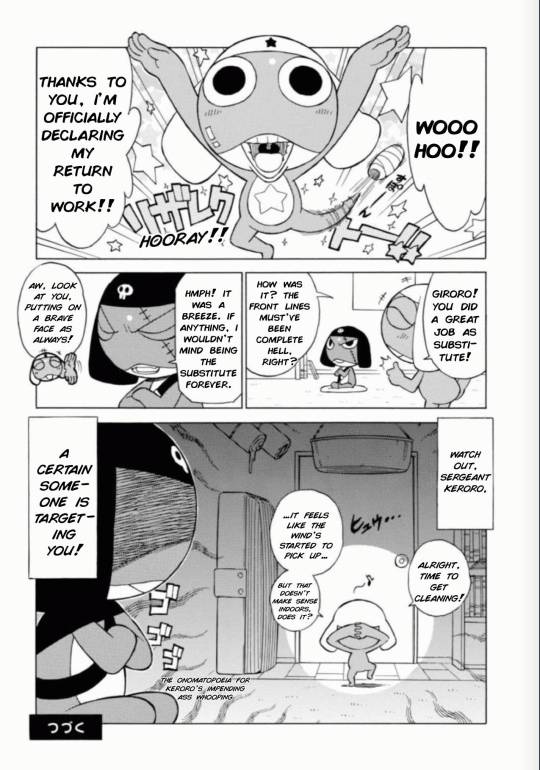
this is the first time i've translated actual manga pages so hopefully it doesnt look too awkward and cringe for a first attempt at dialog....... ive been pushing this off for like,, 3 weeks but ive had the basic translation done for ages
the duo after this is momoka and tamama's which ill get around to eventually (hopefully not taking a month to finish it)
HOWEVER i will say that no matter how i translated this it was going to be cringe. there is never any gironatsu content that isnt cringe. this is me deflecting thank yoy
#let me cook LET ME COOK NOW#cringed every time i wrote out any dialog do not worry#trying to cover up the japanese text is not slick 90% of the time#sgt frog#keroro gunso#keroro gunso manga#natsumi hinata#giroro#may god forgive me for what i am about to tag#gironatsu
45 notes
·
View notes
Text
Makoto X Salazar
HELL YES @arty-dork
They became pen pals when Makoto was in jail. Salazar felt like he owned him (considering Makoto was the reason he got a second chance in life).
After case two, Makoto flew back to LA to see him and Tom. Tom took up most of his time. Salazar found it nice seeing how well the two got along.
While Makoto stayed with TC, him and Salazar started texting a lot. Salazar would send him pictures of Tom and him to show Makoto how they’re doing.
Tom started playing soccer, and wanted Makoto to come to his first game. Salazar texted Makoto and was like “but if you can’t that’s fine no worries”. Makoto showed up at the soccer field the next day extremely jet lagged, but was one of the loudest ones there cheering Tom on. After the game Salazar carried Makoto back to his place so he could sleep.
Salazar was able to taken Tom to Disneyland, Makoto of course flew down to join them. When Salazar became tired, Makoto sucked it up and went with Tom on the rides even though some of them made him want to puke.
After case 4 Makoto traveled the world trying coffee. He made America his last stop so he could go see Salazar. Makoto doesn’t know what it was, but something told him to open his coffee shop in LA.
Salazar offered for Makoto to stay with them, but Makoto felt bad so he got himself an apartment close by. Tom is just happy that Makoto is literally a 10 minutes walk away now.
Salazar quickly becomes a regular in his coffee shop. Tom tags along most of the time. Makoto knows their orders by heart now, the moment he sees them walk in, he’s already making them their order.
Game/movie night becomes a thing for them. Makoto comes over, they either play a board game (tho Makoto is always helping Tom cheat) or watch a movie, and order pizza. If they watch a movie, Tom either sits in the middle of them or on the floor cause he’s so invested into the movie. When Tom falls asleep, Salazar and Makoto will end up watching a different movie together. Sometimes in these moments, Makoto starts dozing off onto Salazar’s shoulder. Salazar let’s him and looks down, dying cause of how cute Makoto looks.
After a few months, it’s clear to all of Makoto’s coffee staff that there is some feelings between him and Salazar. They have started placing bets on who will confess first.
Makoto has picked up and dropped off Tom a few times too school. He started even showing up to some school functions. Teachers and Tom’s friends can hear convos between them “have your homework?” “Yeah” “be good” “I will”. All of the school staff is trying to figure out if Makoto is just a close friend or Salazar’s boyfriend. They’re too afraid to ask though. Tom’s friends are just as confused, if they ask Tom he’s just like “I mean I guess?” And when they go over, Makoto is 90% of the time there.
Confession, they were both drunk. They had gone out to celebrate the success of the coffee shop. Makoto got wasted real quick, probably the shots, Salazar tried to stop him but Makoto ended up roping him in for more drinks. A mutual drove them back to Salazar’s place. Tom was spending the night at a friend’s. Both were leaning on each other, stumbling to the bedroom. Makoto pressed himself up into Salazar’s lips. Salazar took a few moments to register what was happening and then slowly kissed back. Makoto was so drunk tho, he fell asleep while kissing. Salazar put him to bed and went a slept on the couch. Next morning they both has a very long and awkward conversation about their feelings.
Makoto was scared, he was like “I don’t want to put labels on this just yet”. Salazar was understanding, so they agreed, they were dating, but wouldn’t call themselves boyfriends just yet.
Few months (9-10) into dating, things are going really good. However, Makoto is still scared, mainly cause he doesn’t think he’s good enough, or Salazar will end up leaving him like everyone eventually does. Does he tell Salazar? No, he’s scared, he doesn’t want to ruin things, things are good now.
A year into dating, their first fight. Salazar wants to take it to the next level, moving in, calling Makoto his boyfriend, Makoto is still scared, still saying it’s too soon. They argued for hours, luckily it was during the day so Tom was at school. Makoto breaks down, he tells Salazar he should just find someone else. Salazar stares at him, he can’t remember the last time he saw Makoto this broken, he remembers his face his friends “died” in front of him. He kneels down and holds Makoto close, telling him too bad, cause he doesn’t plan on finding someone else that’s just like him. Makoto cried even more. Finally he opened up to Salazar about all his fears and doubts.
Makoto moved in with them, Tom was so excited. He said “fucking finally!” Makoto laughed, Salazar just shook his head sighing and went “I can’t even be mad, cause he’s right”
Makoto is the little spoon, he loves being in Salazar’s arms. He feels safe in them. Sometimes he gets embarrassed by how small he is compare to Salazar “your muscles are as big as my head” “you’re exaggerating, no theyre not”
Makoto speaks in Japanese sometimes just to annoy him. Salazar will the proceed to speak in Spanish, which annoys Makoto but also gets him flustered, cause he loves the way it sounds from him. Also, 99% of the time when Salazar speaks Spanish, he’s flirting with him.
Tom started calling Makoto dad as well, Makoto felt like his heart was going to explode when Tom called him dad. “Have a good day at school” “ok! Bye dad!”
Makoto likes to sit on Salazar’s lap and cover him in kisses. One of the rare moments Salazar becomes flustered. Makoto loves seeing Salazar stern and strict face become undone. He’s proud that he’s the only one that can unravel him.
Both have scars from their past. Makoto lovingly pecks at Salazar’s scars and tells him things like “they make you look more badass”. Makoto is more self conscious about his scars. Salazar will kiss or gently run his fingers along them, assuring Makoto he finds him still handsome with them. It’s become just a way of saying “I love you” to each other, one of them softly kissing or running their finger along the others scars.
Makoto likes to play with Salazar‘s pericings. He likes the way the rings feel, they’re just nice and smooth. Salazar hates it cause his ears are a bit sensitive, but he also still enjoys the feeling.
Salazar likes to run his hands through Makoto’s hair. Slicking it back, playing with the hair swish on top of his head. As Makoto’s hair gets longer to wear he’s tying it into a man bun, Salazar sometimes undoes his bun just so he can play with his hair.
Makoto tried his best to learn Spanish for Salazar. He’s not perfect, but he knows enough to get by. Salazar attempted to try to learn Japanese, but it was too hard for him to understand. But he does know simple phrases such as greetings, and asking where the bathroom is.
They took a trip to Japan. Tom was excited to see where Makoto was from. They spent their time there, Makoto teaching them of Japanese culture, siteseeing, and also visiting Miki’s grave. While Makoto and Tom were taking some picture with some pretty trees, Salazar slipped off back to Miki’s grave. He promised her he look after and love her son, and told her how much Makoto means to him. He promised to make sure they all come back more often to Japan to visit her.
Makoto is the one who usually cooks dinner. He surprised Salazar and Tom with traditonal Hispanic meals. Salazar is really surprised on how well and perfect Makoto makes the dishes.
Salazar did research on Japanese culture to get things for interior decorations, to make Makoto feel more at home. He attempted to make homemade sushi one day, but failed big time. Makoto came home and laughed at what a mess Salazar as made, watching Salazar struggle to roll a sushi roll with his big hands. Makoto taught them how to properly make sushi. So now, Thursday nights are make your own sushi night.
It’s no surprise Salazar gets hit on, a lot. Makoto is the one who gets easily jealous, he knows everyone wants a piece of Salazar. When he gets jealous, he’ll throw himself into Salazar’s arms and become clingy. He’ll glare at the person flirting with him, or will peck at Salazar’s neck and chin so the person gets a hint.
Salazar is the one who tends to get more clingy. When they’re out, he always tends to have a hand on Makoto’s waist. Just holding him close, like he’s afraid he might slip away.
It took a while for them to find a comfortable way for both of them to hold hands. They use to do an awkward hand dance before settling on a good position. Now, holding hands comes naturally.
Friday nights are date nights. They’ll either go out to a bar, or stay in watching their favorite show. Tom always sleeps over at a friend’s house on their date nights.
Makoto is usually the first one up, Salazar lazily follows behind. Makoto would be making coffee or breakfast, and sometimes get scared when he feels too big arms wrap around him. Salazar will hold him, and lay his head on his while watching him cook or brew coffee.
When Salazar is free, he helps out in the coffee shop, mainly doing some heavy lifting. Also dealing with rude customers. All he has to do is just show up and glare at them. One time a customer was so rude he did almost hit them, but Makoto was there to make sure that didn’t happen.
Makoto love to lay on Salazar’s chest and listen to his heartbeat. He loves being in his arms, and just listening to his steady heartbeat. It’s relaxing, espically after a stressful day.
Salazar wanted to propose and had a big thing plan, but he was very bad at hiding the ring. Makoto found it one day while cleaning. The ring was a golden band, with a beautiful engraving in it. Salazar walked in on him holding him and was embarrassed and upset he found it. Makoto just laughed and kissed him all over going “yes”
#great pretender#makoto edamura#the great pretender#grepre#edamura makoto#Salazar#Salazar great pretender#Makoto x Salazar#rare pair#they live in my head rent free#like yes#I love them
15 notes
·
View notes
Text
FEATURE: Happy 10th Anniversary To Every Anime Opening Ever Made (The Video)
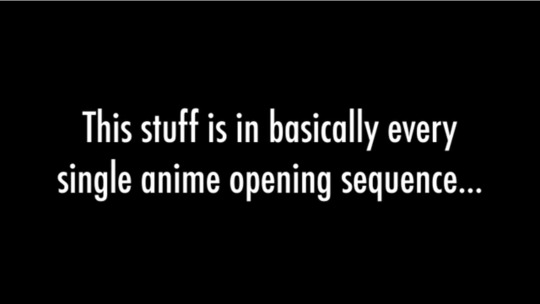
I don't remember where I was at when I first watched "Supercut - Every Anime Opening Ever Made," but I do remember the inescapable truth it showed me after I watched it. Maybe I was on Gaia Online or some other forum when someone posted the link and asked "have you seen this?" I started the video and saw the seagulls flying in the sky. Then the white text on a black background showed up, saying that the following was in every single anime opening sequence...

The montage began! Cameras heading towards the sun! Going right into the character's eyes! The running! This dude was right: This stuff IS in every anime opening!
youtube
This Youtube supercut turns ten years old today, and if you were in the anime fandom around 2010 you had probably seen this video at some point. Now with 3 Million views, I think the reason it resonated with so many people is that for as much anime we watched, we probably noticed these trends but didn't make the full connection until it was fully presented in front of us. Regardless of genre or tone, there was this underlying connective tissue across dozens of shows that we may or may not have seen before. And shown in such a slick and edited fashion provided a connection across the shows we love. While videos like this are likely uploaded onto Youtube now more than I can imagine (maybe even right now as I write this!), this supercut was the original, back in a time when fandom was certainly a lot smaller and growing. Even though Youtube was becoming more of a hub for anime content (as we were slowly getting out of the Bleach-episode-split-into-three-parts era), fandom was more split in the sense that everyone had their own particular hub or forum they claimed home. There was no AniTwitter or Youtube Community tab to trudge around and find out what wider fandom was talking about. And yet, everyone seemed to have come around and appreciated this, a small stepping stone to what the community would end up becoming today. I was just going to celebrate this little piece of fandom fun with an article going down memory lane, but I decided to try to reach out to Derek Lieu, the original creator of the video, to see if he had anything to add for this retrospective. And luckily he got back to me really quickly! Can you first introduce yourself and what you do? My name is Derek Lieu, I currently live in Brooklyn NY and I make video game trailers! I’ve worked on trailers for Firewatch, Subnautica, Spelunky 2, Ooblets, Dead Cells, Half-Life: Alyx, and a lot more. How did you get the idea to make the "Every Anime Opening Ever Made" video? When I learned the American X-Men animated series from the 90s had alternate opening sequences made for when it aired in Japan I became fascinated by what made those openings so distinctly Japanese. I don’t remember my precise thought process, but I started downloading textless versions of anime openings from YouTube to start, and started sorting the footage. I think the one exception I made was for Neon Genesis Evangelion because I couldn’t not include it. About how long do you think it took to edit? Believe it or not the whole project took about an afternoon and maybe part of the evening. Downloading all the openings took longer than the actual editing. After downloading them I sorted the different tropes into categories like I normally do when editing stuff. Once the footage was sorted I barely moved anything around except to adjust for music sync and also where each chunk of tropes fit into the video. I used a specific Ayumi Hamasaki song which was used for the cel-shaded Molly Star Racer trailer (which much later became Oban Star Racers). The original remix song is much longer so I edited it down to about 3.5 minutes.
youtube
Is there anything in particular that stood out to you when you were making it? (Outside of so many shows using the same shots, obviously haha) I think the main thing that occurred to me is that so many of these tropes are just great ways to create cool moving images using as little animation as possible, but which still feel dynamic and fun to watch. One interesting bit of trivia is Trigun is one of the few series whose opening is footage from episodes cut together. This was by far the exception to the rule. I remember this video very fondly back in the earlier Youtube days, and it has 3 Million views as to date. Did you ever expect it to be that successful? Haha, not in the slightest. It seems the videos I give the least amount of thought always get the most number of views and the ones I spend a lot of time get the fewest. What do you think is your favorite and least favorite "trope" in the original video? I like the head turns. I didn’t even give attention to that one when I started the project, but it very quickly revealed itself as one of the most common ones. I don’t think I have a least favorite; they’re all fun to watch. One of the funniest is a person reaching their hand out to someone on the ground; I like this one because it’s so incredibly specific.
youtube
Do you still watch any anime? And if you do, do you see any of those same shots/frames/movements in particular still being used today? I don’t currently watch any anime, but I assume a lot of openings still use a lot of these tropes. Because they cover everything from standing still to running. I later made a video for unique anime openings because there are some which have really great stylized art and interesting images. I also made one for classic anime from the 80s and earlier which helped me see where a lot of the tropes originates. Do you have any other thoughts on the video looking back on it ten years later? Reading comments from people who watched it as a kid and now are rewatching it as adults makes me feel old, haha. Also, people keep telling me I “forgot” an anime. I once tallied all the anime people say I excluded and the list was far far longer than the number of anime in my video. Also, a lot of people mention anime which released after the video was made :P One bit of trivia, I didn’t include any Naruto because at the time I thought it would’ve been funny to exclude the most popular anime at the time. Sorry, Naruto fans. We'd like to thank Derek Lieu for not only making the video, but also for taking the time to speak to us. You can find him on Twitter and Youtube.

Kyle Cardine is an Editor for Crunchyroll. You can find his Twitter here.
2 notes
·
View notes